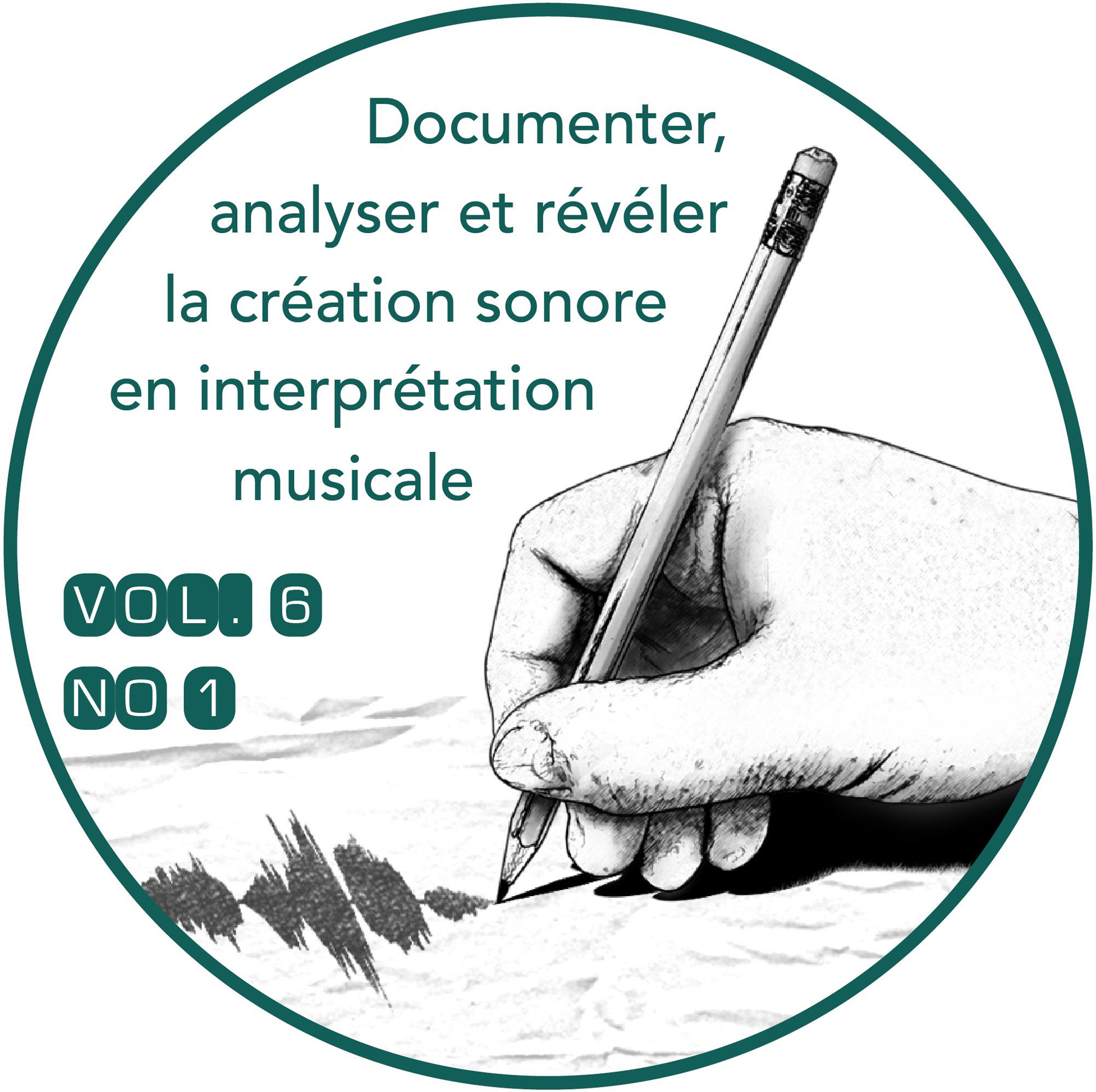Abstracts
Résumé
Cet article présente les résultats d’une étude pilote visant à caractériser trois styles d’interprétation différents de la musique de J.-S. Bach dans le contexte d’un processus de recherche-création. En s’appuyant sur une étude de l’interprétation de la musique baroque au xxe siècle, un pianiste a joué un extrait de la Partita en do mineur (BWV 826) selon trois esthétiques contrastantes (romantique, moderne, rhétorique). Le jeu du pianiste a été capté et enregistré en format de données midi sur un piano Yamaha Disklavier DC7X. Une description verbale de chaque style a ensuite été obtenue suivant la technique de l’auto-explicitation réalisée par le pianiste. Les captations sonores de chaque extrait ont été présentées à un auditeur expert, spécialiste en enregistrement du piano, ce qui a permis d’obtenir une perspective externe sur les interprétations. Ces descriptions qualitatives ont été mises en correspondance avec une analyse quantitative des paramètres d’exécution, comme le tempo, les vitesses d’attaque et le degré de legato.
Mots-clés :
- articulation,
- auto-explication,
- Bruce Haynes,
- Partita en do mineur (BWV 826),
- tempo
Abstract
This article presents the results of a pilot study whose aim was to characterize three different interpretation styles of the works of J.S. Bach in the context of a research creation process. Based on a study of baroque music performance in the 20th century, a pianist performed an excerpt of Bach’s Partita in C minor (BWV 826) according to three contrasting styles (Romantic, Modern and Rhetorical). The pianist’s performance was captured and recorded on midi data format using a Yamaha Disklavier DC7X piano. A verbal description of each style has been provided by the pianist through a self-explicitation exercise. Each audio recording was then presented to an expert auditor, specialist in piano recordings, which provided an external perspective on the interpretations. These qualitative descriptions were then compared with a quantitative analysis of performance parameters such as tempo, the speed of key descent and legato.
Keywords:
- articulation,
- Bruce Haynes,
- Partita in C minor, BWV 826,
- self-explicitation,
- tempo
Appendices
Bibliographie
- Brown, Clive (1999), Classical and Romantic Performing Practice 1750-1900, Oxford/Toronto, Oxford University Press.
- Burke, Robert, et Andrys Onsman (2017), Perspectives on Artistic Research in Music, Lanham, Lexington Books.
- Danuser, Hermann (1996), « Zur Aktualität musikalischer Interpretationstheorie », Musiktheorie, vol. 11, no 1, p. 39-49.
- Dodson, Alan (2011), « Performance Strategies in Three Recordings of Bach’s Invention No. 1 in C Major. A Comparative Study », Intersections. Canadian Journal of Music/Intersections. Revue canadienne de musique, vol. 31, no 2, p. 43-64, http://www.erudit.org/fr/revues/is/2011-v31-n2-is0376/1013213ar/, consulté le 10 juin 2019.
- Doğantan-Dack, Mine (2016), Artistic Practice as Research in Music. Theory, Criticism, Practice, London, Routledge.
- Dreyfus, Laurence (1996), Bach and the Patterns of Invention, Cambridge, Harvard University Press.
- Fabian, Dorottya, Timmers, Renée et Schubert, Emery (2014), Expressiveness in Music Performance. Empirical Approaches Across Styles and Cultures, Oxford, Oxford University Press.
- Handschin, Jacques (1927), « Die alte Musik als Gegenwartsproblem », dans Hans Oesch (dir.) Gedenkschrift Jacques Handschin. Aufsätze und Bibliographie, Haupt, p. 338-41.
- Haynes, Bruce (2007), The End of Early Music. A Period Performer’s History of Music for the Twenty-first Century, Oxford/Toronto, Oxford University Press.
- Heller, Wendy (2014), Music in the Baroque. Western Music in Context, New York, W.W. Norton and Company.
- Hill, Robert (1994), « Overcoming Romanticism. On the Modernization of 20th Century Performance Practice », dans Bryan R. Gilliam (dir.), Music and Performance during the Weimar Republic, Cambridge, Cambridge University Press, p. 37-58.
- Large, Edward W. (1993), « Dynamic Programming for the Analysis of Serial Behaviors », Behavior Research Methods, Instruments, & Computers, vol. 25, no 2, p. 238-241, https://link.springer.com/content/pdf/10.3758/BF03204504.pdf, consulté le 10 juin 2019.
- Large, Edward W., et John F. Kolen (1994), « Resonance and the Perception of Musical Meter », Connection science, vol. 6, no 2-3, p. 177-208, https://musicdynamicslab.uconn.edu/wp-content/uploads/sites/433/2016/03/LargeKolen1994PubsAHEdits.pdf, consulté le 10 juin 2019.
- Lazarov, Viktor (2015), J.S. Bach. Continuity and Rejuvenation – An Interpretation of Bach in the Twenty-first Century, mémoire de maîtrise, Université McGill.
- Milsom, David, et Neal Peres Da Costa (2014), « Expressiveness in Historical Perspective. Nineteenth-century Ideals and Practices », dans Dorottya Fabian, Renee Timmers et Emery Schubert (dir.), Expressiveness in Music Performance. Empirical Approaches Across Styles and Cultures, Oxford, Oxford University Press, p. 80-97.
- Rankin, Summer K., Edward W. Large et Philip W. Fink (2009), « Fractal Tempo Fluctuation and Pulse Prediction », Music Perception. An Interdisciplinary Journal, vol. 26, no 5, p. 401-413, https://www.ncbi.nlm.nih.gov/pmc/articles/PMC4151502/, consulté le 10 juin 2019.
- Rennotte, Simon (2018), Investigation of Expert Pianists’ Music Performance Parameters, from Fine Timbral Control to Expressive Timing Variations, Mémoire de maîtrise, Université de Mons.
- Toiviainen, Petri, et Tuomas Eerola (2016), midi Toolbox 1.1, https://github.com/miditoolbox/1.1, consulté le 10 juin 2019.
- Vermersch, Pierre (2007), « Bases de l’auto-explicitation », Expliciter, no 69 (mars), p. 1-31, https://www.grex2.com/assets/files/expliciter/bases_de_l_autoexplicitation_un_expliciter_69_mars_2007.pdf, consulté le 10 juin 2019.


 10.7202/1013213ar
10.7202/1013213ar